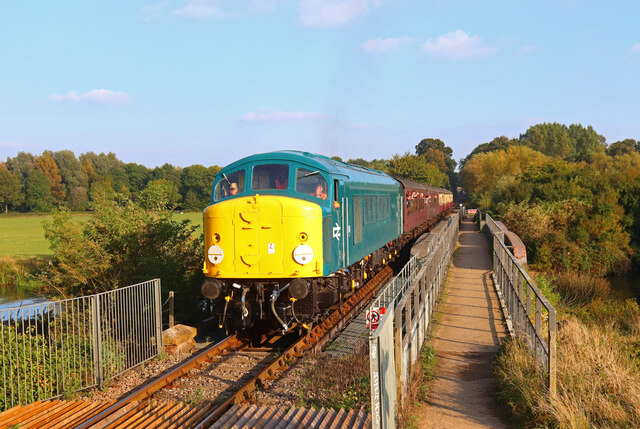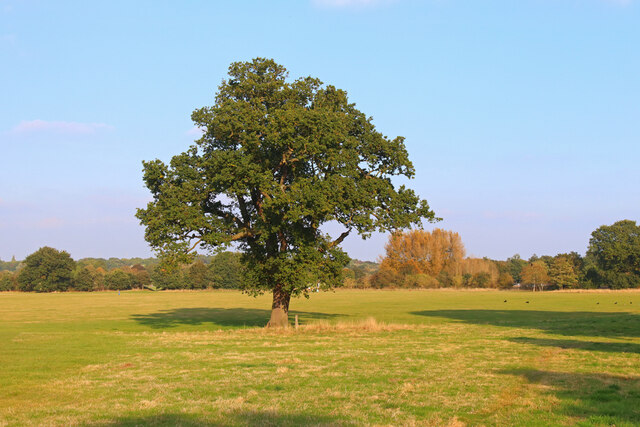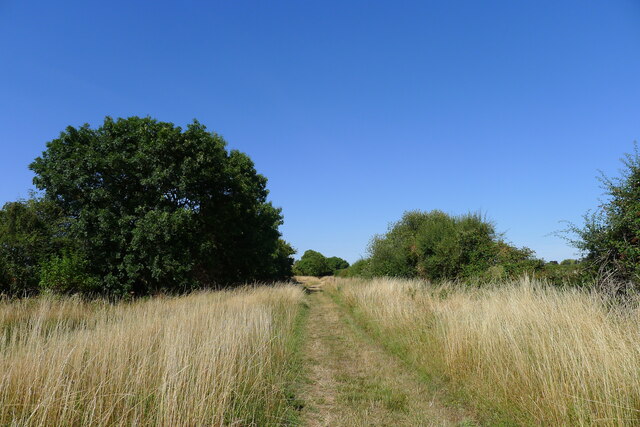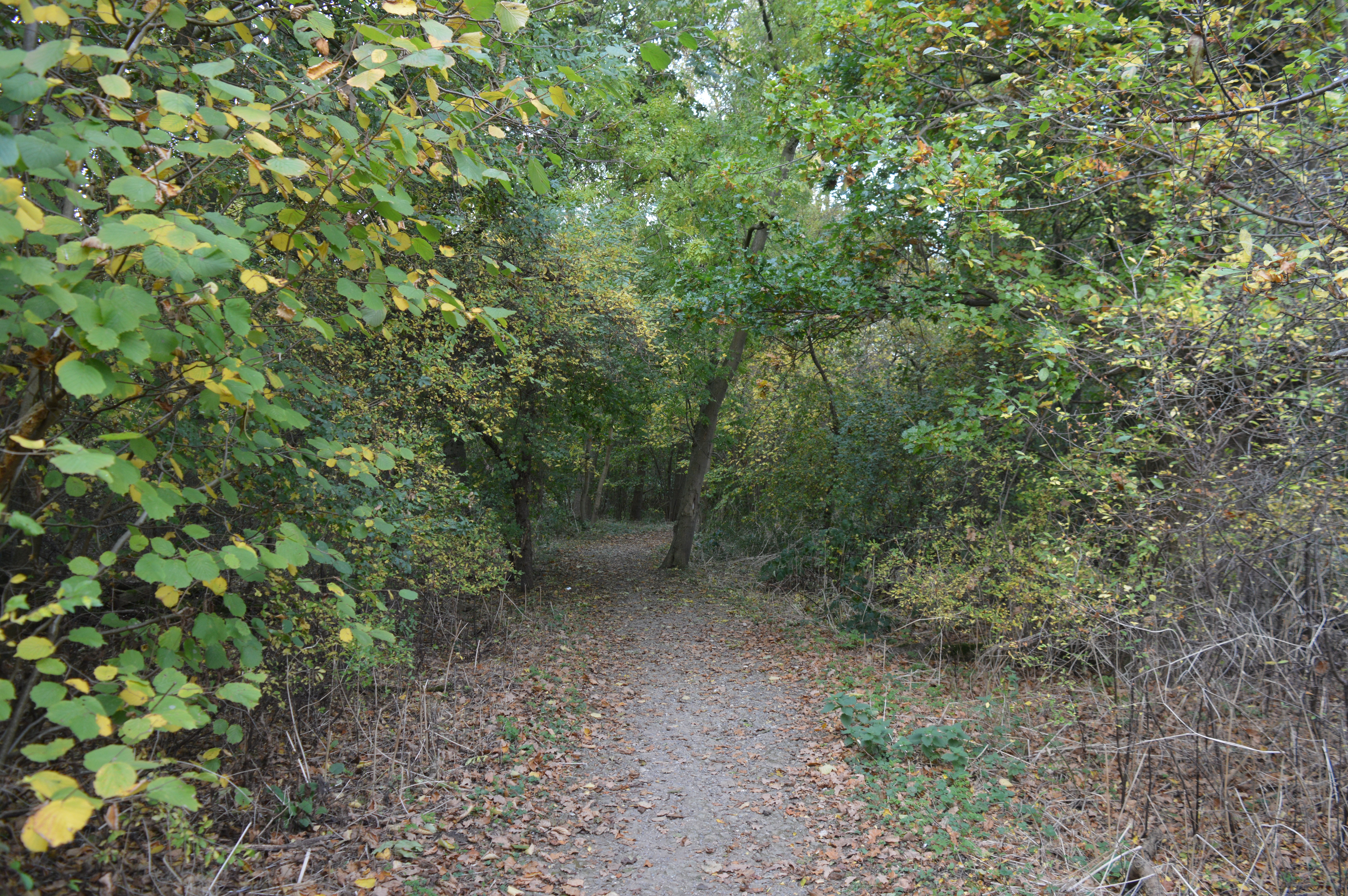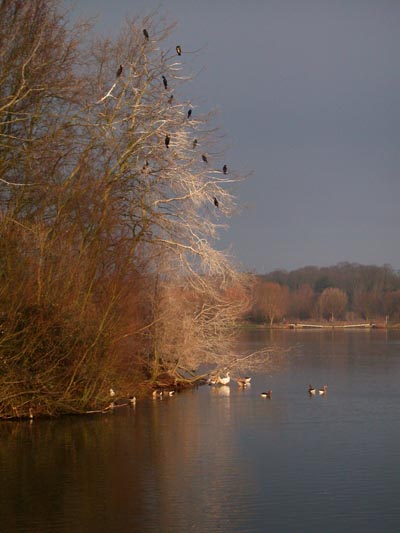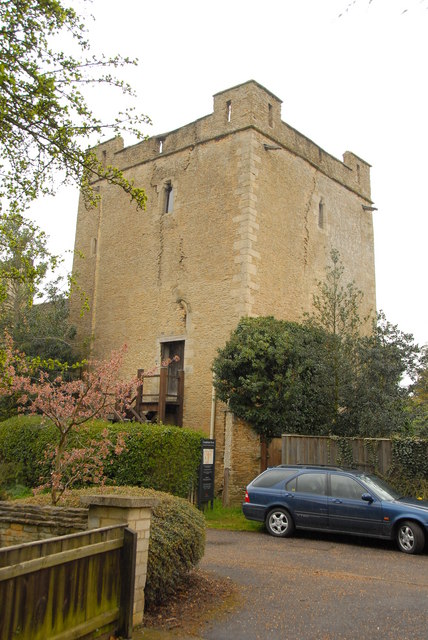Greenchair Plantation
Wood, Forest in Northamptonshire
England
Greenchair Plantation

Greenchair Plantation is a sprawling woodland located in the county of Northamptonshire, England. Covering a vast area, it is a prominent feature of the local landscape and is renowned for its diverse range of plant and animal species.
The plantation is predominantly composed of dense woodlands, with a mixture of deciduous and coniferous trees. The towering oak, beech, and ash trees create a majestic canopy that provides shelter and nesting grounds for a wide variety of bird species. The forest floor is adorned with an array of wildflowers, ferns, and mosses, adding to the natural beauty of the area.
Greenchair Plantation is home to a rich diversity of wildlife. Deer, foxes, and badgers can often be spotted roaming through the forest, while smaller mammals such as squirrels and rabbits are abundant. The plantation also provides a vital habitat for numerous bird species, including woodpeckers, owls, and various songbirds.
The woodland is a popular destination for nature enthusiasts and outdoor enthusiasts alike. Hiking trails and walking paths wind their way through the plantation, offering visitors the opportunity to explore the beauty of the area. The serene atmosphere and tranquil surroundings make it an ideal spot for picnics, birdwatching, or simply enjoying a peaceful day in nature.
Greenchair Plantation is a protected area, managed by the local authorities to ensure the preservation of its natural beauty and biodiversity. Efforts are made to maintain the ecological balance and protect the delicate ecosystems within the woodland.
In conclusion, Greenchair Plantation in Northamptonshire is a captivating woodland, abundant with diverse flora and fauna, making it a haven for nature lovers and a cherished natural asset for the local community.
If you have any feedback on the listing, please let us know in the comments section below.
Greenchair Plantation Images
Images are sourced within 2km of 52.576465/-0.31170265 or Grid Reference TL1498. Thanks to Geograph Open Source API. All images are credited.
![Longthorpe houses [1] Originally three cottages, now two houses, numbers 307 and 309 Thorpe Road, are 18th century cottages with part of one wing from the 17th century. Constructed of coursed rubble stone under a thatch roof. Listed, grade II, with details at: <span class="nowrap"><a title="https://historicengland.org.uk/listing/the-list/list-entry/1309842" rel="nofollow ugc noopener" href="https://historicengland.org.uk/listing/the-list/list-entry/1309842">Link</a><img style="margin-left:2px;" alt="External link" title="External link - shift click to open in new window" src="https://s1.geograph.org.uk/img/external.png" width="10" height="10"/></span>
Longthorpe is a village in the city of Peterborough, some 2 miles west of the city centre. A Roman fort was established here in the 1st century covering 27 acres, later replaced by another fort of 11 acres. The village is home to Longthorpe Tower, a 14th-century tower and fortified manor house, it contains the finest and most complete set of domestic paintings of the period in northern Europe.](https://s0.geograph.org.uk/geophotos/07/12/49/7124928_45696466.jpg)
![Longthorpe features [1] From Thorpe Road, this footpath runs to Melford Close.
Longthorpe is a village in the city of Peterborough, some 2 miles west of the city centre. A Roman fort was established here in the 1st century covering 27 acres, later replaced by another fort of 11 acres. The village is home to Longthorpe Tower, a 14th-century tower and fortified manor house, it contains the finest and most complete set of domestic paintings of the period in northern Europe.](https://s1.geograph.org.uk/geophotos/07/12/49/7124933_3a82256a.jpg)
![Longthorpe houses [3] Number 317 Thorpe Road is built gable end to the street. Constructed in the 18th century of rubble stone with freestone quoins under a thatch roof. There is a modern extension on the left. Listed, grade II, with details at: <span class="nowrap"><a title="https://historicengland.org.uk/listing/the-list/list-entry/1126917" rel="nofollow ugc noopener" href="https://historicengland.org.uk/listing/the-list/list-entry/1126917">Link</a><img style="margin-left:2px;" alt="External link" title="External link - shift click to open in new window" src="https://s1.geograph.org.uk/img/external.png" width="10" height="10"/></span>
Longthorpe is a village in the city of Peterborough, some 2 miles west of the city centre. A Roman fort was established here in the 1st century covering 27 acres, later replaced by another fort of 11 acres. The village is home to Longthorpe Tower, a 14th-century tower and fortified manor house, it contains the finest and most complete set of domestic paintings of the period in northern Europe.](https://s2.geograph.org.uk/geophotos/07/12/49/7124938_f23049ad.jpg)
![Parish church [1] The Anglican parish church of St Botolph was built in the 13th century on the site of an 11th century predecessor. Constructed of rubble stone with freestone quoins under a tile roof. The building was restored in 1869 and most of the fittings are from this date. Listed, grade I, with details at: <span class="nowrap"><a title="https://historicengland.org.uk/listing/the-list/list-entry/1331544" rel="nofollow ugc noopener" href="https://historicengland.org.uk/listing/the-list/list-entry/1331544">Link</a><img style="margin-left:2px;" alt="External link" title="External link - shift click to open in new window" src="https://s1.geograph.org.uk/img/external.png" width="10" height="10"/></span>
Longthorpe is a village in the city of Peterborough, some 2 miles west of the city centre. A Roman fort was established here in the 1st century covering 27 acres, later replaced by another fort of 11 acres. The village is home to Longthorpe Tower, a 14th-century tower and fortified manor house, it contains the finest and most complete set of domestic paintings of the period in northern Europe.](https://s3.geograph.org.uk/geophotos/07/12/49/7124943_98ddc408.jpg)
![Parish church [2] The churchyard. The Anglican parish church of St Botolph was built in the 13th century on the site of an 11th century predecessor. Constructed of rubble stone with freestone quoins under a tile roof. The building was restored in 1869 and most of the fittings are from this date. Listed, grade I, with details at: <span class="nowrap"><a title="https://historicengland.org.uk/listing/the-list/list-entry/1331544" rel="nofollow ugc noopener" href="https://historicengland.org.uk/listing/the-list/list-entry/1331544">Link</a><img style="margin-left:2px;" alt="External link" title="External link - shift click to open in new window" src="https://s1.geograph.org.uk/img/external.png" width="10" height="10"/></span>
Longthorpe is a village in the city of Peterborough, some 2 miles west of the city centre. A Roman fort was established here in the 1st century covering 27 acres, later replaced by another fort of 11 acres. The village is home to Longthorpe Tower, a 14th-century tower and fortified manor house, it contains the finest and most complete set of domestic paintings of the period in northern Europe.](https://s1.geograph.org.uk/geophotos/07/12/49/7124945_37f363ec.jpg)
![Longthorpe houses [4] Number 320 Thorpe Road is a &#039;L&#039; shaped cottage with part built in the 17th century and part in the 18th century. Constructed of rubble stone, mostly rendered, under a thatch roof. Listed, grade II, with details at: <span class="nowrap"><a title="https://historicengland.org.uk/listing/the-list/list-entry/1309785" rel="nofollow ugc noopener" href="https://historicengland.org.uk/listing/the-list/list-entry/1309785">Link</a><img style="margin-left:2px;" alt="External link" title="External link - shift click to open in new window" src="https://s1.geograph.org.uk/img/external.png" width="10" height="10"/></span>
Longthorpe is a village in the city of Peterborough, some 2 miles west of the city centre. A Roman fort was established here in the 1st century covering 27 acres, later replaced by another fort of 11 acres. The village is home to Longthorpe Tower, a 14th-century tower and fortified manor house, it contains the finest and most complete set of domestic paintings of the period in northern Europe.](https://s0.geograph.org.uk/geophotos/07/12/49/7124952_128ba418.jpg)
![Longthorpe houses [5] Numbers 326 and 328 Thorpe Road, are a two 18th century cottages with later, rear additions. Constructed of rubble stone under a thatch roof. Listed, grade II, with details at: <span class="nowrap"><a title="https://historicengland.org.uk/listing/the-list/list-entry/1126921" rel="nofollow ugc noopener" href="https://historicengland.org.uk/listing/the-list/list-entry/1126921">Link</a><img style="margin-left:2px;" alt="External link" title="External link - shift click to open in new window" src="https://s1.geograph.org.uk/img/external.png" width="10" height="10"/></span>
Longthorpe is a village in the city of Peterborough, some 2 miles west of the city centre. A Roman fort was established here in the 1st century covering 27 acres, later replaced by another fort of 11 acres. The village is home to Longthorpe Tower, a 14th-century tower and fortified manor house, it contains the finest and most complete set of domestic paintings of the period in northern Europe.](https://s0.geograph.org.uk/geophotos/07/12/49/7124956_bf710ba9.jpg)
![Longthorpe houses [6] Number 329 Thorpe Road is an 18th century cottage. Constructed of painted rubble stone under a thatch roof. Listed, grade II, with details at: <span class="nowrap"><a title="https://historicengland.org.uk/listing/the-list/list-entry/1331508" rel="nofollow ugc noopener" href="https://historicengland.org.uk/listing/the-list/list-entry/1331508">Link</a><img style="margin-left:2px;" alt="External link" title="External link - shift click to open in new window" src="https://s1.geograph.org.uk/img/external.png" width="10" height="10"/></span>
Longthorpe is a village in the city of Peterborough, some 2 miles west of the city centre. A Roman fort was established here in the 1st century covering 27 acres, later replaced by another fort of 11 acres. The village is home to Longthorpe Tower, a 14th-century tower and fortified manor house, it contains the finest and most complete set of domestic paintings of the period in northern Europe.](https://s2.geograph.org.uk/geophotos/07/12/49/7124958_d960cd89.jpg)
![Longthorpe features [2] A closer look at the thatch figures on the roof of number 329 Thorpe Road <a href="https://www.geograph.org.uk/photo/7124958">TL1698 : Longthorpe houses [6]</a>.
Longthorpe is a village in the city of Peterborough, some 2 miles west of the city centre. A Roman fort was established here in the 1st century covering 27 acres, later replaced by another fort of 11 acres. The village is home to Longthorpe Tower, a 14th-century tower and fortified manor house, it contains the finest and most complete set of domestic paintings of the period in northern Europe.](https://s0.geograph.org.uk/geophotos/07/12/49/7124960_16624ac1.jpg)
![Longthorpe features [3] The gates to Tower House, number 333 Thorpe Road.
Longthorpe is a village in the city of Peterborough, some 2 miles west of the city centre. A Roman fort was established here in the 1st century covering 27 acres, later replaced by another fort of 11 acres. The village is home to Longthorpe Tower, a 14th-century tower and fortified manor house, it contains the finest and most complete set of domestic paintings of the period in northern Europe.](https://s3.geograph.org.uk/geophotos/07/12/49/7124963_a22011b1.jpg)
![Longthorpe Tower [1] Longthorpe Tower was built in the early 14th century as an extension to an existing fortified manor house. The tower has three storeys, is built of stone with walls 6 to 7 feet thick. The first floor was originally designed as living space and contains English medieval wall paintings of religious, secular and moral themes from circa 1330. They were whitewashed around the time of the Reformation and remained hidden until their rediscovery in the 1940s. The tower is listed, grade I, with details at: <span class="nowrap"><a title="https://historicengland.org.uk/listing/the-list/list-entry/1162040" rel="nofollow ugc noopener" href="https://historicengland.org.uk/listing/the-list/list-entry/1162040">Link</a><img style="margin-left:2px;" alt="External link" title="External link - shift click to open in new window" src="https://s1.geograph.org.uk/img/external.png" width="10" height="10"/></span> A Scheduled Ancient Monument with much history and detail at: <span class="nowrap"><a title="https://historicengland.org.uk/listing/the-list/list-entry/1013284" rel="nofollow ugc noopener" href="https://historicengland.org.uk/listing/the-list/list-entry/1013284">Link</a><img style="margin-left:2px;" alt="External link" title="External link - shift click to open in new window" src="https://s1.geograph.org.uk/img/external.png" width="10" height="10"/></span> The tower is in the care of English heritage.
Longthorpe is a village in the city of Peterborough, some 2 miles west of the city centre. A Roman fort was established here in the 1st century covering 27 acres, later replaced by another fort of 11 acres. The village is home to Longthorpe Tower, a 14th-century tower and fortified manor house, it contains the finest and most complete set of domestic paintings of the period in Northern Europe.](https://s0.geograph.org.uk/geophotos/07/12/49/7124976_f58e1197.jpg)
![Longthorpe Tower [2] Longthorpe Tower was built in the early 14th century as an extension to an existing fortified manor house. The tower has three storeys, is built of stone with walls 6 to 7 feet thick. The first floor was originally designed as living space and contains English medieval wall paintings of religious, secular and moral themes from circa 1330. They were whitewashed around the time of the Reformation and remained hidden until their rediscovery in the 1940s. The tower is listed, grade I, with details at: <span class="nowrap"><a title="https://historicengland.org.uk/listing/the-list/list-entry/1162040" rel="nofollow ugc noopener" href="https://historicengland.org.uk/listing/the-list/list-entry/1162040">Link</a><img style="margin-left:2px;" alt="External link" title="External link - shift click to open in new window" src="https://s1.geograph.org.uk/img/external.png" width="10" height="10"/></span> A Scheduled Ancient Monument with much history and detail at: <span class="nowrap"><a title="https://historicengland.org.uk/listing/the-list/list-entry/1013284" rel="nofollow ugc noopener" href="https://historicengland.org.uk/listing/the-list/list-entry/1013284">Link</a><img style="margin-left:2px;" alt="External link" title="External link - shift click to open in new window" src="https://s1.geograph.org.uk/img/external.png" width="10" height="10"/></span> The tower is in the care of English heritage.
Longthorpe is a village in the city of Peterborough, some 2 miles west of the city centre. A Roman fort was established here in the 1st century covering 27 acres, later replaced by another fort of 11 acres. The village is home to Longthorpe Tower, a 14th-century tower and fortified manor house, it contains the finest and most complete set of domestic paintings of the period in Northern Europe.](https://s3.geograph.org.uk/geophotos/07/12/49/7124983_98f24ee8.jpg)
![Longthorpe Tower [3] Longthorpe Tower was built in the early 14th century as an extension to an existing fortified manor house. The tower has three storeys, is built of stone with walls 6 to 7 feet thick. The first floor was originally designed as living space and contains English medieval wall paintings of religious, secular and moral themes from circa 1330. They were whitewashed around the time of the Reformation and remained hidden until their rediscovery in the 1940s. The tower is listed, grade I, with details at: <span class="nowrap"><a title="https://historicengland.org.uk/listing/the-list/list-entry/1162040" rel="nofollow ugc noopener" href="https://historicengland.org.uk/listing/the-list/list-entry/1162040">Link</a><img style="margin-left:2px;" alt="External link" title="External link - shift click to open in new window" src="https://s1.geograph.org.uk/img/external.png" width="10" height="10"/></span> A Scheduled Ancient Monument with much history and detail at: <span class="nowrap"><a title="https://historicengland.org.uk/listing/the-list/list-entry/1013284" rel="nofollow ugc noopener" href="https://historicengland.org.uk/listing/the-list/list-entry/1013284">Link</a><img style="margin-left:2px;" alt="External link" title="External link - shift click to open in new window" src="https://s1.geograph.org.uk/img/external.png" width="10" height="10"/></span> The tower is in the care of English heritage.
Longthorpe is a village in the city of Peterborough, some 2 miles west of the city centre. A Roman fort was established here in the 1st century covering 27 acres, later replaced by another fort of 11 acres. The village is home to Longthorpe Tower, a 14th-century tower and fortified manor house, it contains the finest and most complete set of domestic paintings of the period in Northern Europe.](https://s1.geograph.org.uk/geophotos/07/12/49/7124985_d043332e.jpg)
![Longthorpe Tower [4] Longthorpe Tower was built in the early 14th century as an extension to an existing fortified manor house. The tower has three storeys, is built of stone with walls 6 to 7 feet thick. The first floor was originally designed as living space and contains English medieval wall paintings of religious, secular and moral themes from circa 1330. They were whitewashed around the time of the Reformation and remained hidden until their rediscovery in the 1940s. The tower is listed, grade I, with details at: <span class="nowrap"><a title="https://historicengland.org.uk/listing/the-list/list-entry/1162040" rel="nofollow ugc noopener" href="https://historicengland.org.uk/listing/the-list/list-entry/1162040">Link</a><img style="margin-left:2px;" alt="External link" title="External link - shift click to open in new window" src="https://s1.geograph.org.uk/img/external.png" width="10" height="10"/></span> A Scheduled Ancient Monument with much history and detail at: <span class="nowrap"><a title="https://historicengland.org.uk/listing/the-list/list-entry/1013284" rel="nofollow ugc noopener" href="https://historicengland.org.uk/listing/the-list/list-entry/1013284">Link</a><img style="margin-left:2px;" alt="External link" title="External link - shift click to open in new window" src="https://s1.geograph.org.uk/img/external.png" width="10" height="10"/></span> The tower is in the care of English heritage.
Longthorpe is a village in the city of Peterborough, some 2 miles west of the city centre. A Roman fort was established here in the 1st century covering 27 acres, later replaced by another fort of 11 acres. The village is home to Longthorpe Tower, a 14th-century tower and fortified manor house, it contains the finest and most complete set of domestic paintings of the period in Northern Europe.](https://s2.geograph.org.uk/geophotos/07/12/49/7124986_b0f9dee8.jpg)
Greenchair Plantation is located at Grid Ref: TL1498 (Lat: 52.576465, Lng: -0.31170265)
Division: Soke of Peterborough
Unitary Authority: Peterborough
Police Authority: Cambridgeshire
What 3 Words
///firms.dare.eager. Near Castor, Cambridgeshire
Nearby Locations
Related Wikis
Milton Hall
Milton Hall near Peterborough, is the largest private house in Cambridgeshire, England. As part of the Soke of Peterborough, it was formerly part of Northamptonshire...
Thorpe Wood
Thorpe Wood is a 10 hectare nature reserve on the western outskirts of Peterborough in Cambridgeshire. It is managed by the Wildlife Trust for Bedfordshire...
Nene Park, Peterborough
Nene Park is a country park in the city of Peterborough, Cambridgeshire in the United Kingdom. Opened in 1978, it occupies a site approximately three and...
Longthorpe Tower
Longthorpe Tower is a 14th-century three-storey tower in the Longthorpe area of Peterborough, Cambridgeshire, England. It is famous for its well-preserved...
Ferry Meadows railway station
Ferry Meadows is a station on the Nene Valley Railway between Wansford and Orton Mere. The current station has one platform, and has no car park of its...
Castor, Cambridgeshire
Castor is a village and civil parish in the City of Peterborough unitary authority, about 4 miles (6.4 km) west of the city centre. The parish is part...
Longthorpe
Longthorpe is an area of the city of Peterborough, in the ceremonial county of Cambridgeshire, England. Located two miles (3.2 km) west from the city centre...
Netherton, Peterborough
Netherton is a residential area of the city of Peterborough, in the Peterborough district, in the ceremonial county of Cambridgeshire, England. For electoral...
Nearby Amenities
Located within 500m of 52.576465,-0.31170265Have you been to Greenchair Plantation?
Leave your review of Greenchair Plantation below (or comments, questions and feedback).
